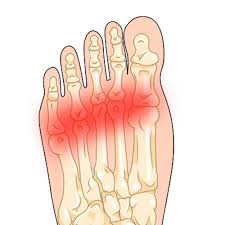 Metatarsalgia, pain in the metatarsal/forefoot area, is a common foot problem. In milder cases, it can be managed with pads, supportive footwear, adequate rest, NIAIDs, and other remedies. However, some cases become more severe over time. They cause considerable pain and undermine mobility. Among the treatments that help manage the syndrome, prolotherapy has won a number of adherents. It involves injections of dextrose, often mixed with an anesthetic. The injections stimulate natural healing. But prolotherapy is not necessarily the best option.
Metatarsalgia, pain in the metatarsal/forefoot area, is a common foot problem. In milder cases, it can be managed with pads, supportive footwear, adequate rest, NIAIDs, and other remedies. However, some cases become more severe over time. They cause considerable pain and undermine mobility. Among the treatments that help manage the syndrome, prolotherapy has won a number of adherents. It involves injections of dextrose, often mixed with an anesthetic. The injections stimulate natural healing. But prolotherapy is not necessarily the best option.
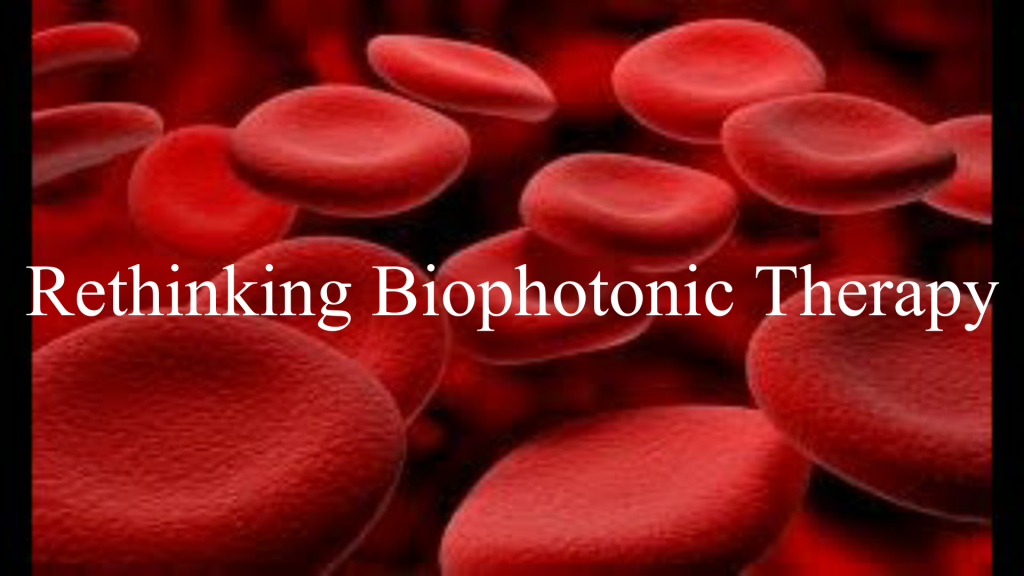 In this video, Tom Lowe, director of Physicians Awareness UBI, and Kenneth J. Dillon, author of Healing Photons, discuss the history, science, challenges, and promise of Biophotonic Therapy. Also known as ultraviolet blood irradiation, BT treats small amounts of blood with light in extracorporeal or intravenous modes. BT was invented by Emmet Knott in the 1920s. Hundreds of clinical studies have shown its effectiveness in various indications, e.g., against childhood asthma. Thousands of practitioners around the world use it to treat a wide range of disorders. BT is the leading phototherapeutic treatment of infectious diseases.
In this video, Tom Lowe, director of Physicians Awareness UBI, and Kenneth J. Dillon, author of Healing Photons, discuss the history, science, challenges, and promise of Biophotonic Therapy. Also known as ultraviolet blood irradiation, BT treats small amounts of blood with light in extracorporeal or intravenous modes. BT was invented by Emmet Knott in the 1920s. Hundreds of clinical studies have shown its effectiveness in various indications, e.g., against childhood asthma. Thousands of practitioners around the world use it to treat a wide range of disorders. BT is the leading phototherapeutic treatment of infectious diseases.
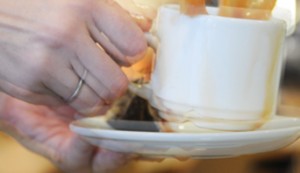 After signing a consent form, a 70-year old semi-retired male engineer in good general health reported that he had had tremor in his hands, but nowhere else, for 25 years. He recalled his father having had the same tremor. A general practitioner had diagnosed this engineer’s case as familial tremor. He had also heard it termed “anticipatory tremor”—it occurred mainly when he moved his hands to undertake some action.
After signing a consent form, a 70-year old semi-retired male engineer in good general health reported that he had had tremor in his hands, but nowhere else, for 25 years. He recalled his father having had the same tremor. A general practitioner had diagnosed this engineer’s case as familial tremor. He had also heard it termed “anticipatory tremor”—it occurred mainly when he moved his hands to undertake some action.
Over time the tremor had gained in amplitude. When he held a piece of paper, he had a hard time reading because his hands would shake. When he lifted up a briefcase, his hand would “go wild”, with jerks of a full inch back and forth. However, the tremor was not so bad as significantly to disrupt his manual activities at work. He is right-handed. The tremor was worse in his left hand than in his right at a ratio that he estimated as 3:2.
 Humankind needs a low-cost, low-side effects therapy for disseminated infections like HIV and multidrug-resistant TB. In fact, circumstantial evidence and logic suggest that such a therapy exists. But, for perverse reasons, it has never been properly tested. That therapy is Biophotonic Therapy, which can be administered to the blood extracorporeally with various kinds of light or intravenously with a low-intensity laser. BT has an excellent track record as a treatment of viral disorders ranging from bulbar spinal poliomyelitis to chronic hepatitis. Invented in the United States in the 1920s, BT has been used extensively in Germany and Russia, but not in any clinical trial against HIV or MDR-TB.
Humankind needs a low-cost, low-side effects therapy for disseminated infections like HIV and multidrug-resistant TB. In fact, circumstantial evidence and logic suggest that such a therapy exists. But, for perverse reasons, it has never been properly tested. That therapy is Biophotonic Therapy, which can be administered to the blood extracorporeally with various kinds of light or intravenously with a low-intensity laser. BT has an excellent track record as a treatment of viral disorders ranging from bulbar spinal poliomyelitis to chronic hepatitis. Invented in the United States in the 1920s, BT has been used extensively in Germany and Russia, but not in any clinical trial against HIV or MDR-TB.
Biophotonic Therapy, however, is not the only approach that calls out for testing against HIV, MDR-TB, and other disseminated infections. Another candidate is Magnetized Water Therapy.
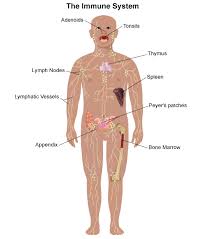 Identifying the best ways to stimulate the immune system to fight infectious diseases and cancer makes eminent sense and could provide highly attractive benefits. But it is not easy to do. Here is a list of category-leading immunostimulants, followed by a discussion of the issues involved.
Identifying the best ways to stimulate the immune system to fight infectious diseases and cancer makes eminent sense and could provide highly attractive benefits. But it is not easy to do. Here is a list of category-leading immunostimulants, followed by a discussion of the issues involved.
Cytokines: IL-2 has shown itself to be an effective general immunostimulant in scores of clinical trials against different indications and appears promising against HIV (Cohen and Powderly, 2004). Used in high doses, IL-2 has significant side effects, so it is best used as a low-dose adjuvant. Other cytokines of proven general merit include G-CSF and GM-CSF, both for hematopoiesis. Interferons may work in specific cases, but their side effects make them less suitable as broad-spectrum adjuvants.
Microbial fragments/toxins: Of the large number of candidates, beta-glucans (also found in plants) are the most frequently investigated as an approach to provoking a general immune response (Wagner, 1999).
 Negative thoughts have a way of inserting themselves unbidden into our minds. They reflect the unhappiness, perversity, and tragedy in our past and in the world about us. Only a Pollyanna would be ashamed to acknowledge them.
Negative thoughts have a way of inserting themselves unbidden into our minds. They reflect the unhappiness, perversity, and tragedy in our past and in the world about us. Only a Pollyanna would be ashamed to acknowledge them.
Negative thinking (rumination) does little harm as a long as it simply passes like a shadow across the otherwise sunny landscape of the mind. But negative thoughts bear a burden of emotion. They tend to plant themselves squarely in our path and grow roots. We dwell on them, sometimes for hours at a time. In certain cases this can lead to genuine depression. More often, habitual negative thinking tends to make people unhappy, pessimistic, cynical, suspicious, and morose. It also wastes precious resources of time and emotional energy. And it can lead to anxiety and depression.
The Afghan Herbal Medicines for Addiction and Depression project aims to conduct clinical trials of promising herbal medicines drawn from Afghanistan’s high-potential medicinal and aromatic plants (MAP) sector, in keeping with traditional Unani medicine. Addiction (overwhelmingly from opiates) and depression (some from Post-Traumatic Stress Disorder from the horrors of Afghanistan’s wars, and some from mistreatment of women) represent especially salient targets, and they possess worldwide importance. Unani herbal medicines have been reported in preliminary Iranian clinical studies to be effective and safe in these indications, and they possess certain advantages over synthetic drugs. However, thorough, scientific, multicenter trials need to be done.
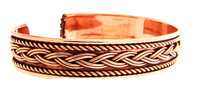 1. Medicinal bracelets offer an attractive, simple, easy-to-use kind of natural medicine. They can also teach us much about deeper patterns of physiology and nutrition.
1. Medicinal bracelets offer an attractive, simple, easy-to-use kind of natural medicine. They can also teach us much about deeper patterns of physiology and nutrition.
2. The bracelets can be composed of various minerals. In practice, to avoid overdosing of trace elements, they tend to contain mainly copper and zinc. The principles governing bracelets also apply to other kinds of jewelry, but here also one needs to steer clear of overdosing. In South Asia silver anklets actually may be implicated
 Caffeine, the world’s most widely used psychoactive substance, attracts a lot of research. Caffeine also attracts controversy. Some scientists argue that caffeine is a benign and useful drug whose side effects are only of concern in regard to a small number of “sensitives”, including those with pre-existing anxiety or similar symptoms. They note that caffeine improves attention, reaction time, numeric and verbal memory, and work output and endurance in long-term exercise.
Caffeine, the world’s most widely used psychoactive substance, attracts a lot of research. Caffeine also attracts controversy. Some scientists argue that caffeine is a benign and useful drug whose side effects are only of concern in regard to a small number of “sensitives”, including those with pre-existing anxiety or similar symptoms. They note that caffeine improves attention, reaction time, numeric and verbal memory, and work output and endurance in long-term exercise.
But other researchers claim that caffeine causes multiple damaging effects ranging from boosting blood pressure to disrupting sleep, and that these affect hundreds of millions.
 The treatment of severe depression remains a forbidding scientific frontier (Nemeroff, 2007). No current pharmacological therapy seems more than occasionally effective on those who suffer from it. Of the traditional device-based treatments, only Electro-Convulsive Therapy (ECT) has shown itself effective, and ECT is only effective to some extent and in some cases. ECT also comes with a significant price tag and consistent mid-level side effects. Many patients do not respond to any therapy, while the suicide rate among victims of severe depression remains tragically high.
The treatment of severe depression remains a forbidding scientific frontier (Nemeroff, 2007). No current pharmacological therapy seems more than occasionally effective on those who suffer from it. Of the traditional device-based treatments, only Electro-Convulsive Therapy (ECT) has shown itself effective, and ECT is only effective to some extent and in some cases. ECT also comes with a significant price tag and consistent mid-level side effects. Many patients do not respond to any therapy, while the suicide rate among victims of severe depression remains tragically high.
Treatment-resistant depression, whether moderate or severe, is an unusually expensive disorder because it tends to affect people at relatively young ages, making them less able to perform at work, frequently absent from work, or simply unable to work at all for decades on end (Crown, 2002). Researchers are currently investigating various novel approaches to the treatment of severe depression. But expanding the range of possible approaches to such a refractory syndrome can in the long run lead to a more optimal outcome. Here are three new approaches not currently under consideration.
 Here are three overlooked methods of treating respiratory and disseminated infections that resemble the one caused by the COVID-19 virus.
Here are three overlooked methods of treating respiratory and disseminated infections that resemble the one caused by the COVID-19 virus.
 Many nutrition experts confidently recommend the Mediterranean Diet. Its vegetables, fruits, whole grains, nuts, olive oil, limited dairy products, and other natural foods provide a full range of nutrients even while minimizing or eliminating red meat and processed foods considered detrimental to health. But the question of whether one can gain further benefit from adding supplements to protect against hidden deficiencies or optimize health and performance remains open.
Many nutrition experts confidently recommend the Mediterranean Diet. Its vegetables, fruits, whole grains, nuts, olive oil, limited dairy products, and other natural foods provide a full range of nutrients even while minimizing or eliminating red meat and processed foods considered detrimental to health. But the question of whether one can gain further benefit from adding supplements to protect against hidden deficiencies or optimize health and performance remains open.
Certainly, turning to supplements would seem to violate the spirit of the Mediterranean Diet. Shouldn’t we trust Nature to provide us ample, complete nutrition in the form of food when we make the right choices? Didn’t the original models of the Mediterranean Diet–the Cretans of the 1950s–do very well without supplements? Shouldn’t we avoid excessive or even paranoid concern about hidden deficiencies and rather bask in the Mediterranean sun (or its local equivalent) while tasting the savory concoctions of Mediterranean chefs?

